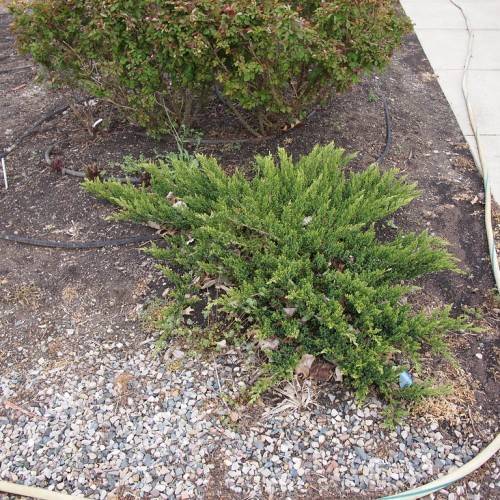
creeping juniper
Juniperus horizontalis 'Plumosa'
Cycle:
Perennial
Watering:
Minimum
Hardiness Zone:
2
Flowers:
Flowers
Sun:
Full sun
Soil:
Sandy Loamy Clay Rocky
Fruits:
Fruits Ready In Fall
Leaf:
Yes
Growth Rate:
Low
Maintenance:
Low
Salt Tolerant:
Yes
Thorny:
Yes
Invasive:
Yes
Care Level:
Moderate
watering
Creeping Juniper should be watered deeply but infrequently. On average, it requires 1 thorough watering every 10-14 days. During dry weather, you can lengthen the time between waterings, but during the heat of summer be sure to water before the soil dries out completely. Avoid overhead watering, as it may lead to disease. Water in the mornings or early afternoons when temperatures are cooler and direct sunlight is limited. Do not water late in the day, as it may cause fungal growth on the leaves. When watering, make sure the plant is receiving ample amount of water (at least 1-2 in.), as it will penetrate the soil better than several light waterings, ensuring that all of the root system is receiving hydration.
sunlight
Creeping juniper (Juniperus horizontalis 'Plumosa') prefers to be grown in an area that gets at least 4 to 6 hours of direct sunlight per day. Creeping junipers grow best in USDA hardiness zones 3 through 9, depending on the species. They also like to be planted in areas that have well-drained soil. In the summer months, it is beneficial to provide your creeping juniper with some afternoon shade to avoid scorching of the leaves. An ideal location for a creeping juniper would be a sunny spot that gets morning sun and afternoon shade.
pruning
Creeping juniper (Juniperus horizontalis 'Plumosa') should be pruned in the late winter or early spring before new growth begins. In the first year, lightly prune to keep it in bounds and to encourage a bushy habit. Yearly pruning should consist of removing dead wood and straggly growth and lightly shaping. It is important not to prune too much at once, as it can cause damage to the plant. It is best to take off no more than 1-third of the foliage.
